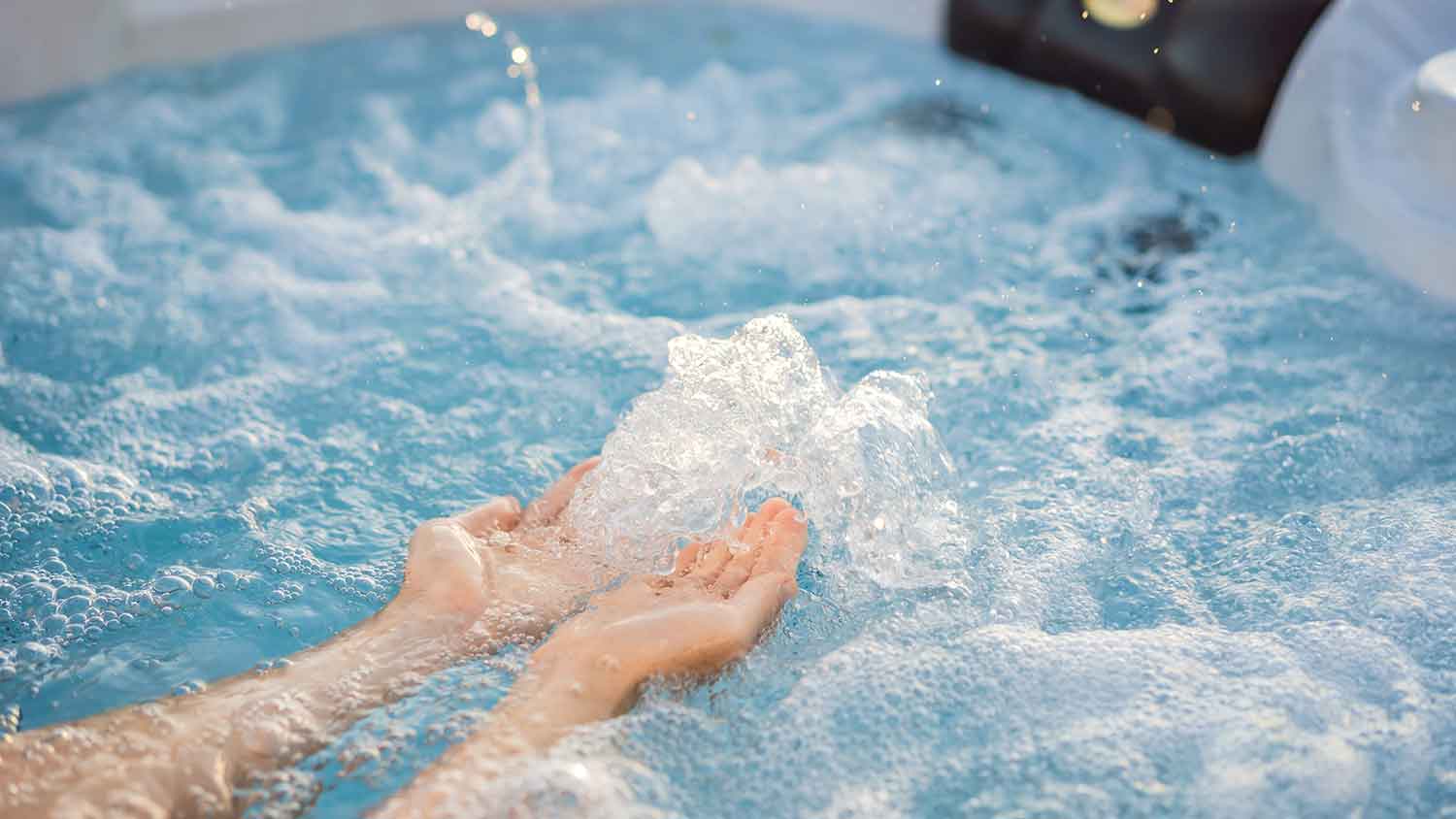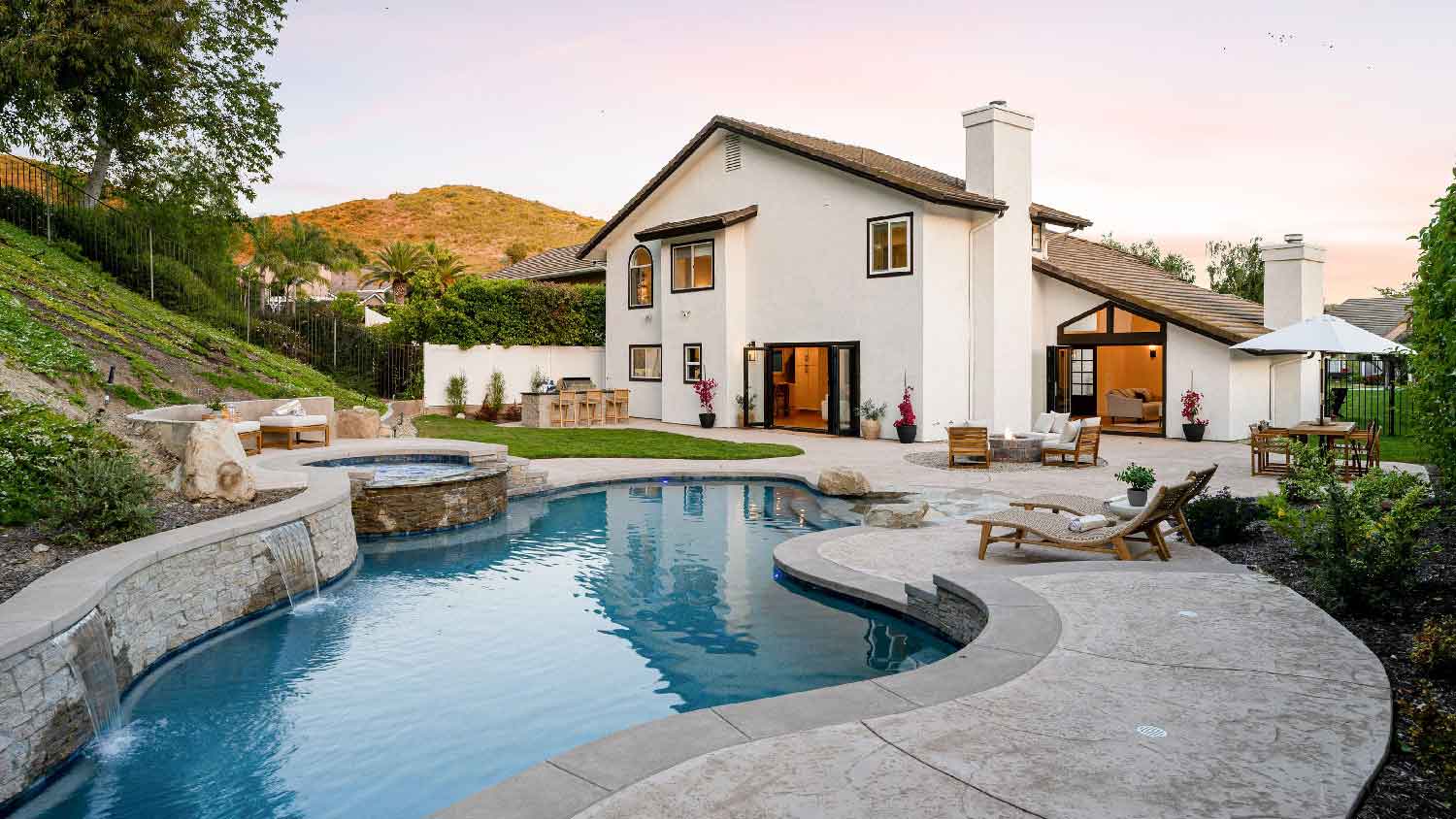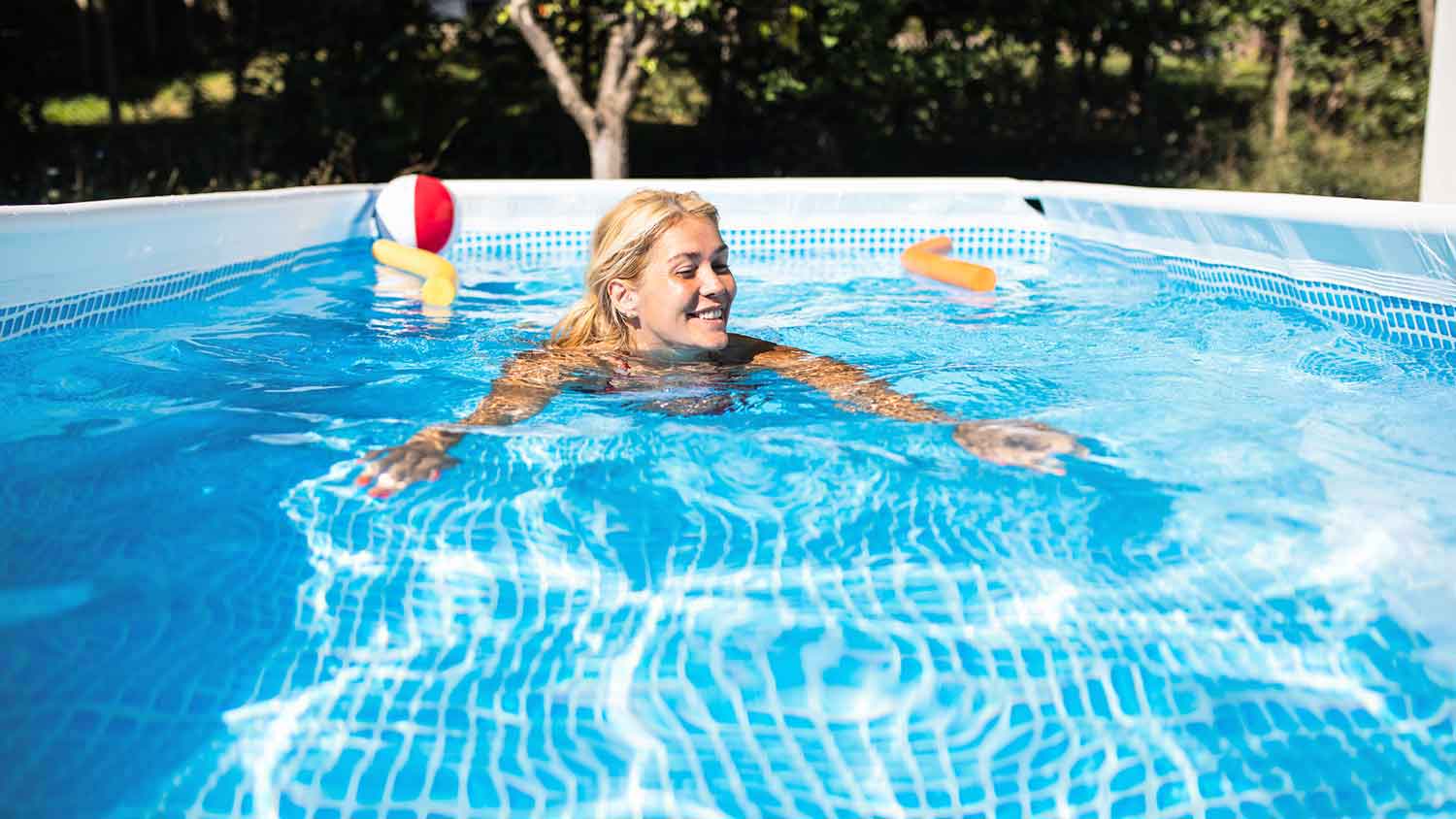How Often to Drain Your Hot Tub: Everything You Wanted to Know
Drain your water regularly and enhance your soak


At a minimum, drain your tub every three to four months, but the size and number of users make a difference.
Keep an eye out for signs that you need to drain your tub, like cloudy and foamy water.
Proper maintenance will help your water stay balanced and last longer.
The water is the star of your hot tub, and it needs more than regular testing and balancing. In fact, you should know how often to drain your hot tub so you can maintain your equipment and ensure safe soaks. Here are all the factors you need to consider, but you can always hire a hot tub professional for the job.
Why You Should Drain Your Hot Tub
Draining your hot tub might seem like a waste of water, but it’s an important part of maintaining your spa. Even though your chemicals and sanitizers will work to keep your water balanced and at optimal levels, at some point, there will be too many total dissolved solids (TDS) in the water.
TDS refers to dissolved matter in your water like minerals, chemicals, salts, and organic compounds. Anything you add to your hot tub water will increase the TDS levels, including every chemical and product you use to balance and sanitize your water, as well as dead skin cells, sunscreen, lotions, and makeup.
Tap water has TDS levels of around 350 parts per million (ppm), while regular hot tubs should have 1,000 to 2,000 ppm. With regular use, your TDS levels will eventually reach the 3,000 ppm mark. When this happens, you’ll likely have a hard time balancing your water. You’re due for a drain and refill.
Eventually, excessive TDS levels can lead to unhealthy water in your hot tub that’s not safe to use. Hot tub health risks like bacterial infections are serious, so you can see how important draining and refilling your tub really is.
Once you refill the tub with fresh water, it’ll be easier to balance it. Staying on top of your hot tub draining schedule is a part of knowing how to keep your hot tub clean.
Figuring Out How Often to Drain Your Hot Tub
So how often should the hot tub water be changed? The main factors that will affect how often you need to drain your hot tub are the size of your tub and the number of people who use it.
Generally, for chlorine and bromine hot tubs, plan on changing the water at least every three to four months. If you have a saltwater hot tub, you’ll need to drain the tub at least once to twice a year.
Chlorine and Bromine Tubs
To get a better idea of how often to drain your water for chlorine and bromine tubs, do a quick calculation. First, figure out how many gallons of water your hot tub uses. Divide that number by the number of users. Then, divide the answer by three. That will give you the number of days you can go before you need to drain the hot tub.
For example, let’s say you have a four- to six-person tub that holds 450 gallons of water. And you have four people who regularly use the tub. That comes out to around 38 days. On the other hand, if you only have two people who regularly use the tub, you can go up to 75 days.
These numbers assume you’re doing proper maintenance tasks for your tub, especially cleaning your filter weekly as well as testing your water two to three times a week.
Saltwater Tubs
Saltwater tubs don’t require as much rigorous draining and refilling as chlorine and bromine tubs. This is because a saltwater tub doesn’t require large amounts of chemicals to balance the water.
The most important thing to remember is to replace the cartridge every four months and test your water weekly. Your cartridge turns salt into chlorine, so replacing it regularly will keep your water safe. With proper maintenance, most people can safely wait a year to drain and refill their saltwater tubs.
Some instances when you’ll need to drain your tub more frequently include if you use the hot tub a lot, like daily use, or if more than two people regularly use the tub.
Signs You Should Drain Your Hot Tub

Let’s say you’ve figured out that you should drain your hot tub every three to four months. Even so, that’s not a hard-and-fast rule that you can solely rely on. Here are some important signs to look out for that’ll let you know it’s time to drain the tub, regardless of the schedule you’ve planned on:
Foamy water
Cloudy water
Bad-smelling water
Scum lines
Water that’s hard to balance
Adding more chemicals than usual
All these signs point to problems with your hot tub water. Fortunately, in most cases, unless you have a biofilm problem, a simple drain, clean, and refill will get your spa back in business.
If you have biofilm—a buildup of bacteria, microorganisms, and organic compounds—you’ll need to super-chlorinate your water and use biofilm cleaner before draining the tub. Some clues that you have biofilm include foamy, cloudy, and bad-smelling water. You may also notice blobs floating in the water along with a slimy layer on your tub surface.
If you need assistance draining your hot tub, hire a hot tub installer near you who can get the job done. Then you can focus on relaxing and enjoying your spa without worrying about replacing the water.
How to Drain Your Hot Tub
If it’s time to drain your hot tub, you may be wondering how to get the job done. It’s a fairly straightforward process that most DIYers can handle with the following steps:
Turn off the power at the circuit breaker and disconnect the water supply.
Drain the tub with a drain valve, submersible pump, or a wet-dry vacuum.
Turn off the main water and auto-shutoff valves, then remove the hoses from the drain plugs.
Drain each water jet.
Refill the tub.
Balance the water.
Tips for Draining Your Hot Tub
Here are some tips to keep in mind when draining your hot tub:
Consider doing a thorough cleaning of your hot tub shell before refilling it.
If you live in an area with harsh winters, drain your tub in the fall.
Don’t drain and refill your hot tub when it’s below freezing.
Plan to drain the water away from your foundation and into a sewer drain or lawn area. Be sure to check your local codes.
Hire a hot tub professional who can drain your tub for you.
Draining your tub regularly will help keep your hot tub maintenance costs down. It’ll also help you enjoy your hot tub sessions without worrying about dirty or unsafe water.















